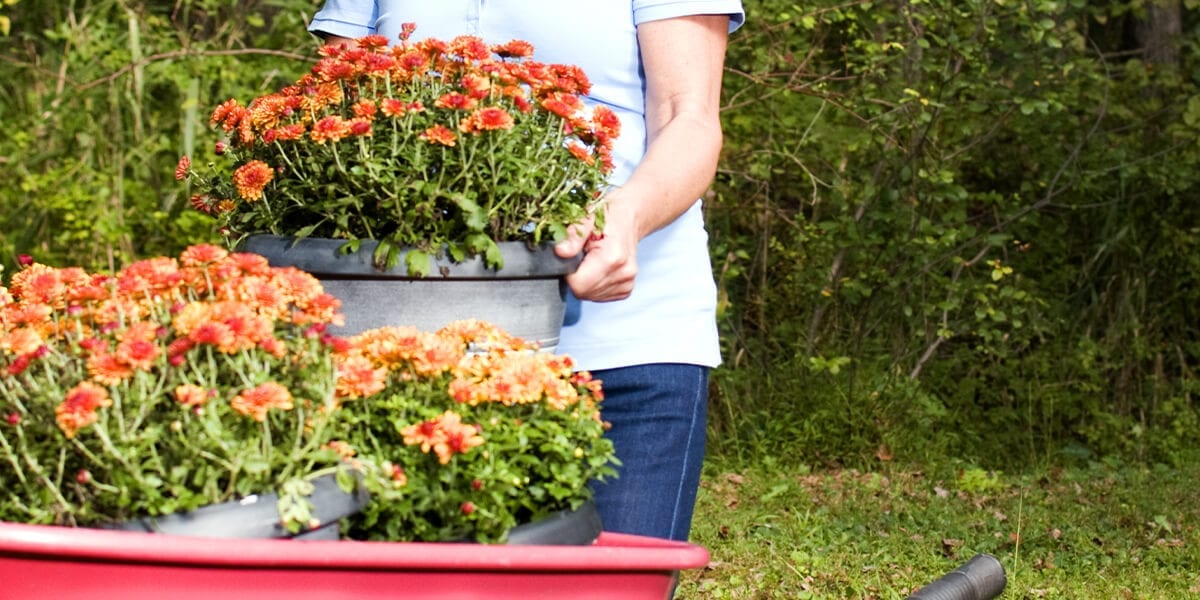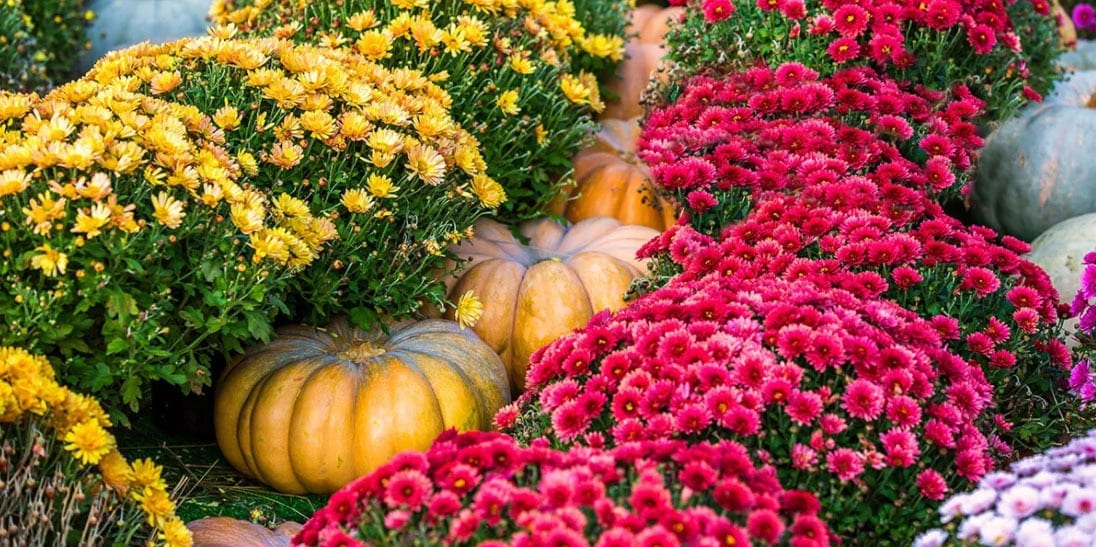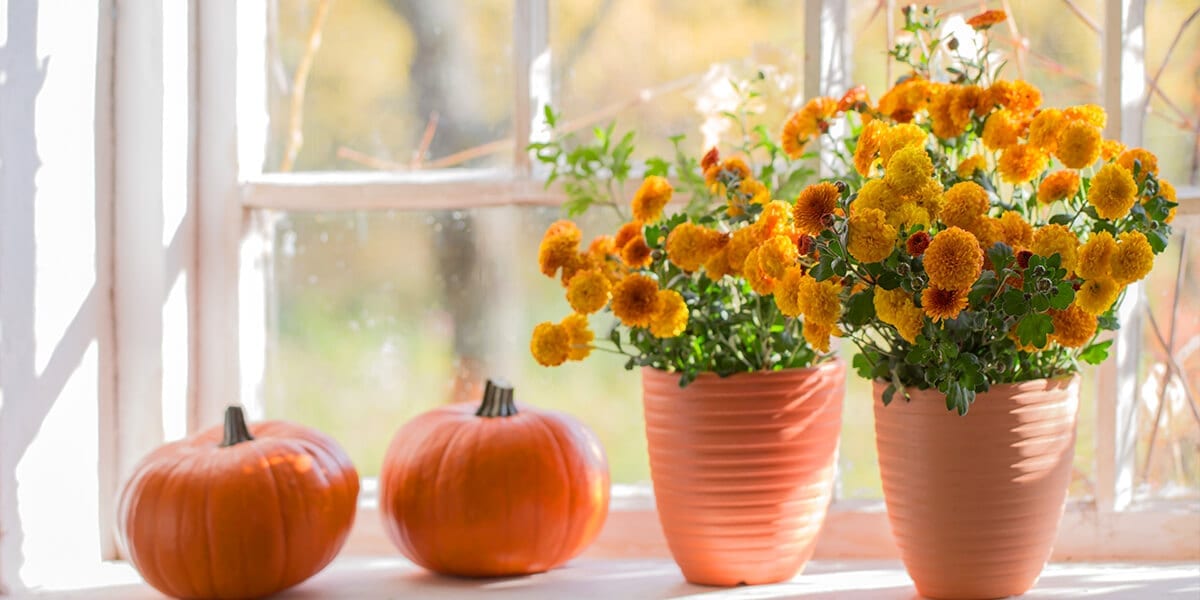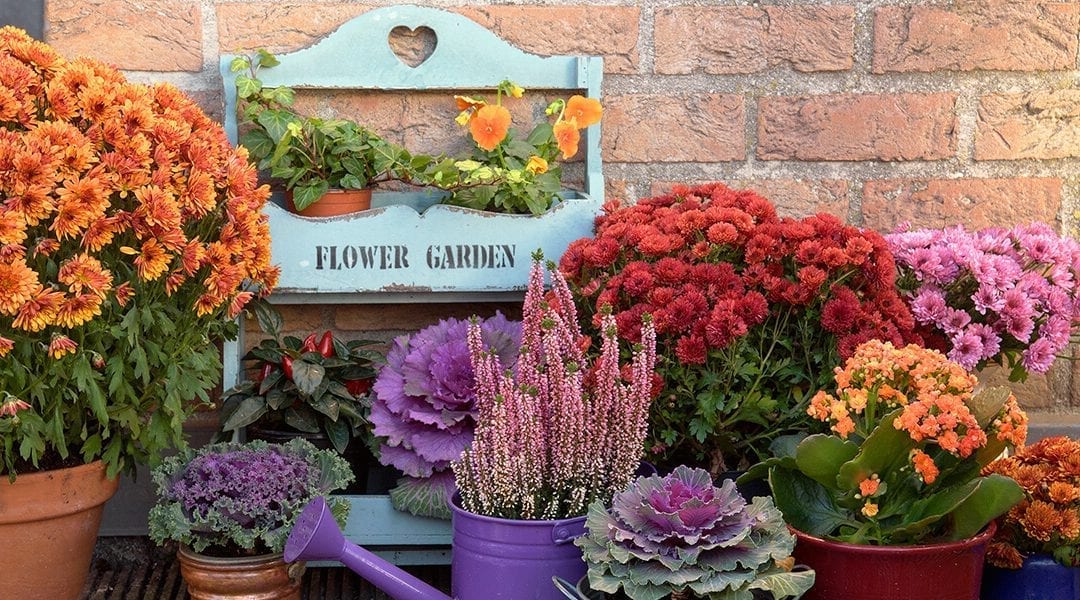They have a complicated name, but these flowers are simply beautiful fall garden plants. They come from the aster family, but they’re showier than their wild relatives. These fall favorite plants have a very special place in our hearts—we grow all of ours locally here in Carpentersville! Some blossoms are like daisies; others are like pom-poms or buttons. Whatever their shape, they all have colorful, dense flowers that bloom into the fall. Here are the best tips for growing chrysanthemums!
Types of Chrysanthemums
While there are both annual and perennial varieties of mums, most of the perennial varieties aren’t hardy enough to withstand our Chicago winters. For that matter, it’s pretty tricky to find them! Instead, we recommend sticking with annual chrysanthemums (often sold as “garden mums”), which start blooming in late August and look their best through early to mid-fall.
How Do You Prepare Soil for Chrysanthemums?
Mums love well-draining soil with consistent moisture. It’s best to dig down about 8 to 12 inches to loosen the earth and mix in 2 to 4 inches of peat or compost. Grab a handful of soil and give it a squeeze. The perfect texture should neither clump nor totally disintegrate, but gently crumble when you open your hand.

Where Do Chrysanthemums Grow Best?
Mums are sun-loving plants. The more sun they have, the more they’ll grow. As a minimum, they require at least six hours of sunlight each day. A little afternoon shade is ideal in the heat of summer. When they sense a change in daylength late in the season, they begin to set their flower buds. They also need good air circulation to prevent mildew and other fungi, so be mindful to follow spacing instructions.

Our Favorite Chrysanthemums
You can find them in almost any color of the rainbow and with many styles—from the classic dense florets to spacious anemone-like petals. Here are some beauties that thrive in Chicago:
- Plumberry: this late bloomer displays classic, deep plum blossoms at a modest height of 1-2 feet.
- Elena Gold: this early bloomer reaches a slightly smaller size and unfurls yellow-gold flowers to match the glowing leaves of autumn.
- Bonnie Red: this beauty reveals luscious cherry red petals with a yellow center, just when you thought your flower garden was winding down.
How Do You Care For Mums In The Winter?
Most people treat mums as annuals, purchasing new and exciting colors and varieties every year. However, if you can’t bear to say goodbye and you’re up for a challenge, it is possible to overwinter them indoors. Let them die back naturally in the fall, rather than cutting them down. This helps the plant fall into dormancy. In the springtime, you can easily clean up the dead leaves. During the winter, the freeze-thaw cycles can confuse perennials and damage the roots. To keep the soil temperature constant and protect the roots, you can insulate your mums with a couple inches of mulch, like wood chips, leaves, straw, or bark mulch. They’ll appreciate the extra care when they come back in the spring.

How Do You Grow Chrysanthemums Indoors?
Most mum plants grow 1-3 feet in height and require a 12-inch container. Give them rich potting soil with good drainage and a sunny spot in a south-facing window. Because they need to sense the changing intervals of daylight to bloom, try to keep them away from indoor lights. Over the winter, you can store them in a garage away from artificial light to help them rest.
Whether you’re caring for them indoors or outside, chrysanthemums are one of the final jewels of the gardening year. They give your fall garden beds another flush of color just as the leaves are turning red, and the taste of fall is in the air. Pop into our garden center for more advice and to see the wonderful selection we have!
Platt Hill Nursery is Chicago’s premier garden center and nursery.


